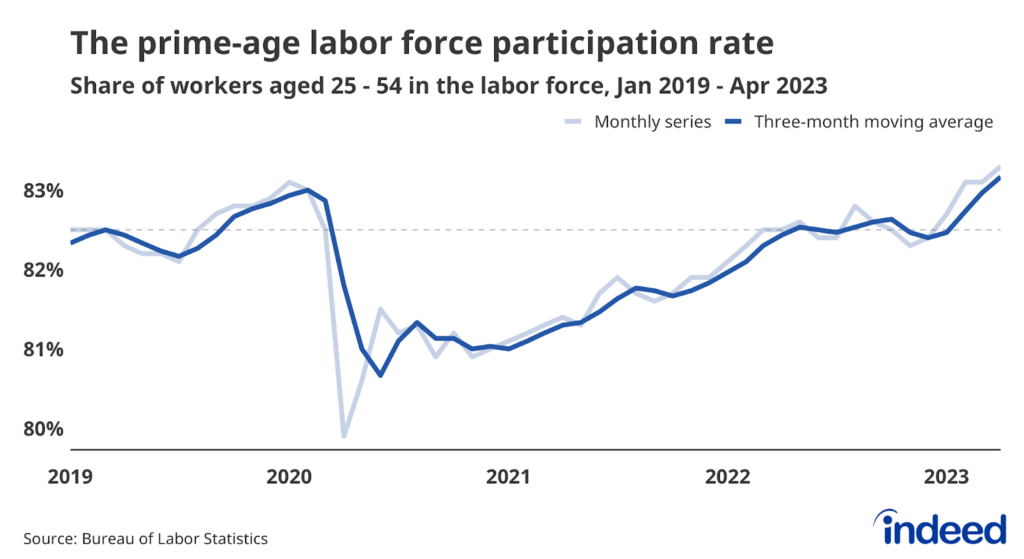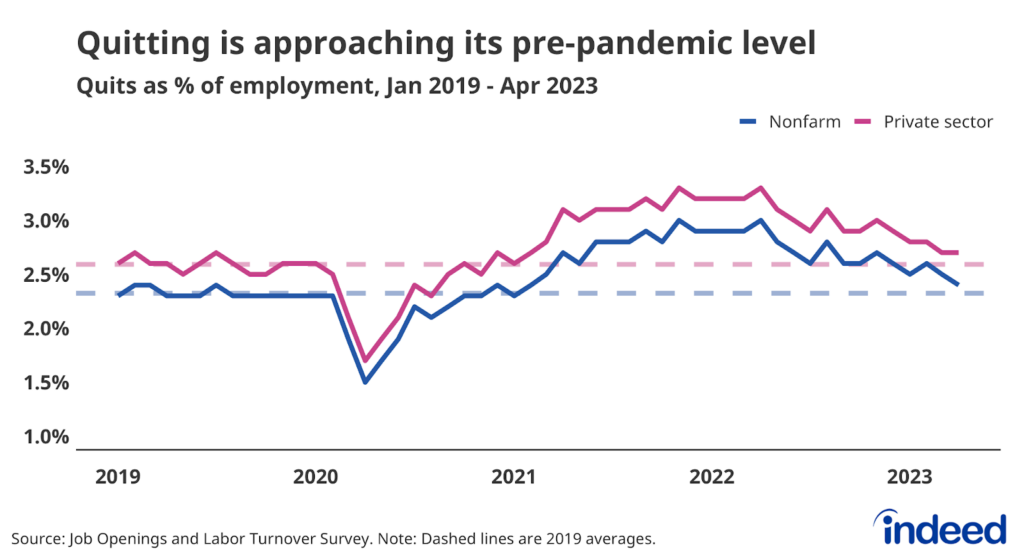Key points:
- Employers added 339,000 jobs in May, as job gains accelerated and broadened—with jobs increasing over the month in more industries.
- However, more people reported being unemployed in May, with the unemployment rate spiking 0.3 points to 3.7%.
- When the two surveys disagree, it’s best to wait for confirmation of any new trends in additional months of data.
Looking past the blockbuster figure of 339,000 jobs added last month, there’s a lot to be confused and even concerned about in this month’s jobs report. The large spike in the unemployment rate, from 3.4% to 3.7%, is the largest monthly increase since the early days of the pandemic, as both more employed people entered unemployment, and fewer unemployed people found a job. An even larger—and arguably more concerning—spike in the Black unemployment rate threatens to reverse substantial gains made over the past few years. With only one month of data it can be easy to overreact, but certain red flags cannot be ignored.
Payroll gains were very strong in May, accelerating from their April pace and broadening as the diffusion index rose. But things aren’t all rosy. Average weekly hours worked continued to decline, and are now below their average level from 2017–2019; a traditional recession indicator, and a potential signal that employers are now able to hire workers more readily.
The spike in the unemployment rate was the most troubling sign in this report. Almost half of the increase in the number of unemployed workers was due to a spike in Black unemployment. This might be statistical noise, or it could be a sign of Black workers disproportionately bearing the brunt of a rise in joblessness.
When you’re lost it’s best to stay where you are. The two sides of this report are telling different stories. Most other data shows a labor market with high levels of demand for workers. Hopefully, the concerning signs in this report are one-month aberrations. But unfortunately, we can’t know that for sure.



